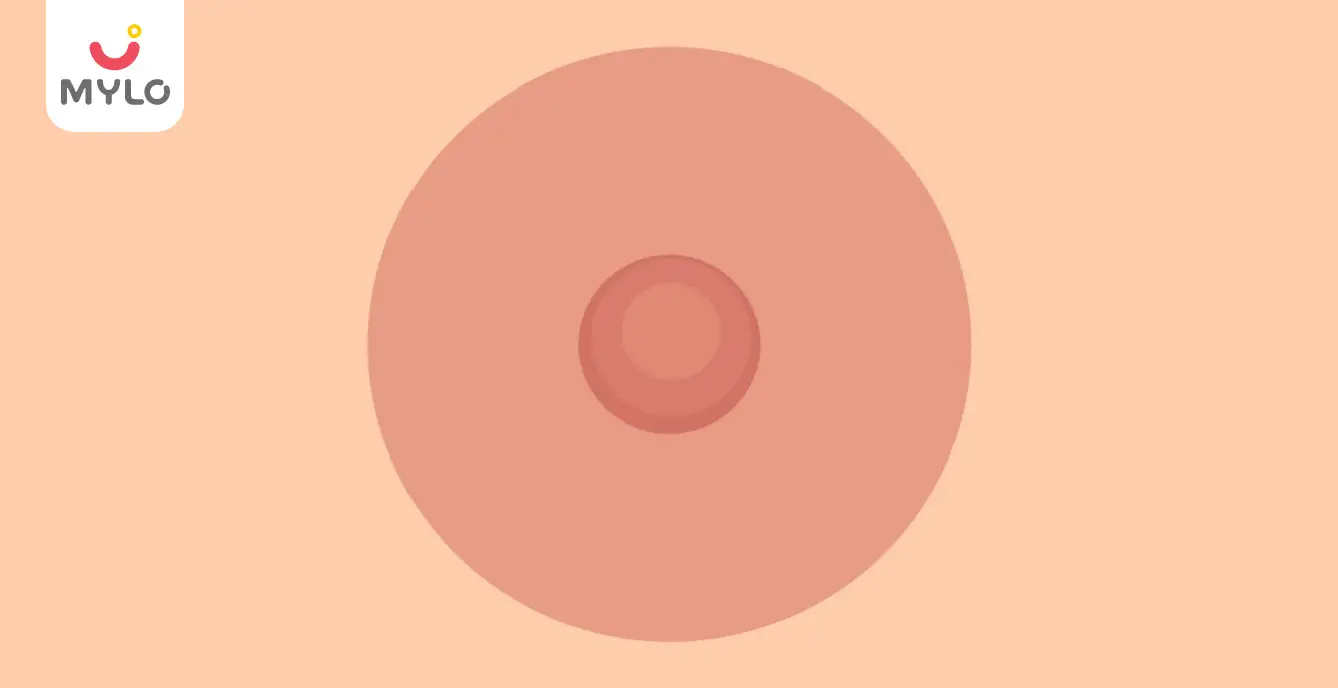Home

Understanding Infertility: Causes, Symptoms, and Treatments
In this Article

Getting Pregnant
Understanding Infertility: Causes, Symptoms, and Treatments
Updated on 3 November 2023
For many couples, the journey towards parenthood can be an emotionally charged rollercoaster, with unexpected ups and downs that can leave them feeling confused, heartbroken, and helpless. Infertility is a condition that affects millions of people worldwide and can be caused by a variety of factors, including age, genetics, lifestyle, and medical conditions. The inability to conceive or carry a pregnancy to term can have a devastating impact on couples, their families, and their relationships.
In this article, we will explore the causes, symptoms, and options for infertility treatment, and provide support and guidance for those who are struggling on their path to parenthood.
What is Infertility?
Infertility is a condition that affects both men and women. It is defined as the inability to conceive a child after one year of regular, unprotected intercourse. Infertility can be caused by a range of factors, including hormonal imbalances, genetic disorders, and lifestyle factors.
Infertility is a common problem that affects millions of couples worldwide. It is estimated that one in every six couples struggles with infertility. Infertility can cause significant emotional distress and can be a major source of stress in a relationship.
Infertility in Men
Male infertility is a common problem that can be caused by a range of factors. The most common causes of infertility in men include low sperm count, poor sperm motility, and abnormal sperm morphology. Other factors that can contribute to male infertility include hormonal imbalances, genetic disorders, and lifestyle factors such as smoking, alcohol consumption, and exposure to environmental toxins.
The symptoms of male infertility can include difficulty achieving or maintaining an erection, pain or swelling in the testicles, and a decrease in the volume of ejaculate. Men who are struggling with infertility should speak to their healthcare provider to determine the underlying cause of their infertility.
The doctor may recommend the following tests for diagnosing infertility in men:
1. Semen Analysis
A sample of semen is tested to check for low motility, sperm quality, and sperm count.
2. Blood Test
Blood tests are taken to check testosterone levels and genetic issues.
3. Scrotal Ultrasound
An ultrasound is conducted to check for testicular or scrotal abnormalities.
Infertility in Women
Female infertility is a complex condition that can be caused by a range of factors. Some of the most common causes of infertility in women include hormonal imbalances, ovulation disorders such as polycystic ovary syndrome, and structural abnormalities of the reproductive system such as blocked fallopian tubes or uterine fibroids.
The symptoms of female infertility can vary depending on the underlying cause. Some women may experience irregular menstrual cycles, while others may have no obvious symptoms. Women who are struggling to conceive should speak to their healthcare provider to determine the underlying cause of their infertility.
The doctor may recommend one of the following tests to diagnose infertility in women:
1. Pelvic Exam
The doctor will perform a pap smear to check for signs of abnormalities.
2. Blood Test
A blood test will be conducted to check for hormone levels.
3. Transvaginal Ultrasound
The procedure involves inserting a wand into the vagina to detect reproductive issues.
4. Hysterectomy
A long, thin tube is inserted into the vagina to check for uterine abnormalities.
5. Saline Solohysteogram (SIS)
The uterus is filled with saline water, making it easier for the doctor to conduct an ultrasound and check for issues.
6. Hysterosalpingogram (HSG)
A dye is injected into the uterus to check if the fallopian tubes are blocked.
7. Laparoscopy
A camera-fitted thin tube is inserted through a cut in the abdomen to check for abnormalities like fibroids.
Primary Infertility vs. Secondary Infertility
There are two types of infertility: primary infertility and secondary infertility.
1. Primary infertility
Primary infertility refers to the inability of a couple to conceive a child after at least one year of unprotected sex. This term is applied to couples who have never had a successful pregnancy. Primary infertility is often attributed to issues with fertilized eggs or embryo survival, issues with egg production, or tumors and birth defects affecting the reproductive tract.
2. Secondary infertility
On the other hand, secondary infertility is the inability of a couple to conceive a child after having had at least one successful pregnancy in the past. Secondary infertility can be caused by various factors such as age, duration of marriage, and socio-economic status. Changes in fertility status over time or by new factors such as endometriosis, pelvic inflammatory disease, or other medical conditions can also lead to secondary infertility.
Infertility Treatments Options
There are several treatment options available for couples who are struggling with infertility. The most common treatments include medication, surgery, and assisted reproductive technology (ART).
1. Medication
Medication can be used to treat hormonal imbalances and ovulation disorders in women. Common medications include clomiphene citrate, letrozole, and gonadotropins. In men, medication can be used to treat hormonal imbalances and improve sperm production.
2. Surgery
Surgery can be used to correct structural abnormalities of the reproductive system in both men and women. Common procedures include tubal ligation reversal, varicocele repair, and testicular biopsy.
3. Assisted reproductive technology
Assisted reproductive technology (ART) includes several different procedures that can be used to help couples conceive. These procedures include in vitro fertilization (IVF), intracytoplasmic sperm injection (ICSI), and intrauterine insemination (IUI).
Male Infertility Treatment
The treatment options for infertility depend on the underlying cause of the condition. In cases where the infertility is caused by hormonal imbalances, medication may be prescribed to correct the imbalance. In cases where the infertility is caused by low sperm count or poor sperm motility, intrauterine insemination (IUI) may be recommended.
In cases where the infertility is caused by more severe sperm abnormalities, such as azoospermia (the absence of sperm in the ejaculate), intracytoplasmic sperm injection (ICSI) may be recommended. This procedure involves injecting a single sperm directly into an egg to facilitate fertilization.
In cases where the infertility is caused by structural abnormalities of the reproductive system, surgery may be necessary. Common procedures include varicocele repair, testicular biopsy, and vasectomy reversal.
Female Infertility Treatment
The treatment options for female infertility depend on the underlying cause of the condition. In cases where the infertility is caused by ovulation disorders, medication may be prescribed to stimulate ovulation. In cases where the infertility is caused by structural abnormalities of the reproductive system, surgery may be necessary.
Assisted reproductive technology (ART) can also be used to help women conceive. In vitro fertilization (IVF) is the most common form of ART. This procedure involves fertilizing eggs with sperm in a laboratory and then transferring the resulting embryos to the uterus.
Conclusion
Infertility is a complex condition that affects millions of couples worldwide. If you are struggling with infertility, speak to your healthcare provider today to explore your treatment options. Remember that you are not alone, and there is hope for starting a family.
FAQs
1. Does female masturabation cause infertility?
No, female masturbation does not cause infertility. Masturbation does not affect ovulation, fertility, or menstruation. Masturbation can improve sexual health awareness and overall health. The frequency of masturbation varies from person to person.
2. Does masturbation cause infertility in men?
No, masturbation does not cause infertility in men. Masturbation does not cause infertility in men, but ejaculating multiple times per day may reduce sperm count. It is recommended to avoid masturbation during the fertile window if trying to conceive, but otherwise, there is no reason to abstain from it.
3. What is the difference between sterility and infertility?
Sterility and infertility both refer to conditions that affect a person's ability to conceive a child. However, infertility refers to a situation where a person has been unable to conceive through unprotected sex for a year or more. On the other hand, sterility is a medical condition where a person is unable to conceive, even with medical or surgical intervention or assisted reproductive technologies.
References
1. Okonofua FE, Ntoimo LFC, Omonkhua A, Ayodeji O, Olafusi C, Unuabonah E, Ohenhen V. (2022). Causes and Risk Factors for Male Infertility: A Scoping Review of Published Studies. Int J Gen Med
2. Abebe MS, Afework M, Abaynew Y. (2020). Primary and secondary infertility in Africa: systematic review with meta-analysis. Fertil Res Pract.
3. Carson SA, Kallen AN. (2021). Diagnosis and Management of Infertility: A Review. JAMA.



Written by
Madhavi Gupta
Dr. Madhavi Gupta is an accomplished Ayurvedic doctor specializing in Medical content writing with an experience of over 10 years.
Read MoreGet baby's diet chart, and growth tips

Related Articles
Related Questions
Influenza and boostrix injection kisiko laga hai kya 8 month pregnancy me and q lagta hai ye plz reply me

Hai.... My last period was in feb 24. I tested in 40 th day morning 3:30 .. That is faint line .. I conculed mylo thz app also.... And I asked tha dr wait for 3 to 5 days ... Im also waiting ... Then I test today 4:15 test is sooooo faint ... And I feel in ma body no pregnancy symptoms. What can I do .

Baby kicks KB Marta hai Plz tell mi

PCOD kya hota hai

How to detect pcos

Related Topics
RECENTLY PUBLISHED ARTICLES
our most recent articles

Diet & Nutrition
গর্ভাবস্থায় আলুবোখরা: উপকারিতা ও ঝুঁকি | Prunes During Pregnancy: Benefits & Risks in Bengali

Diet & Nutrition
গর্ভাবস্থায় হিং | ঝুঁকি, সুবিধা এবং অন্যান্য চিকিৎসা | Hing During Pregnancy | Risks, Benefits & Other Treatments in Bengali

Women Specific Issues
স্তনের উপর সাদা দাগ: লক্ষণ, কারণ এবং চিকিৎসা | White Spots on Nipple: Causes, Symptoms, and Treatments in Bengali

Diet & Nutrition
গর্ভাবস্থায় পোহা: উপকারিতা, ধরণ এবং রেসিপি | Poha During Pregnancy: Benefits, Types & Recipes in Bengali

Diet & Nutrition
গর্ভাবস্থায় মাছ: উপকারিতা এবং ঝুঁকি | Fish In Pregnancy: Benefits and Risks in Bengali

Diet & Nutrition
গর্ভাবস্থায় রেড ওয়াইন: পার্শ্ব প্রতিক্রিয়া এবং নির্দেশিকা | Red Wine During Pregnancy: Side Effects & Guidelines in Bengali
- ইনার থাই চ্যাফিং: কারণ, উপসর্গ এবং চিকিৎসা | Inner Thigh Chafing: Causes, Symptoms & Treatment in Bengali
- গর্ভাবস্থায় ব্রাউন রাইস: উপকারিতা ও সতর্কতা | Brown Rice During Pregnancy: Benefits & Precautions in Bengali
- Velamentous Cord Insertion - Precautions, Results & Safety
- Unlock the Secret to Flawless Skin: 7 Must-Have Qualities in a Face Serum
- Unlock the Secret to Radiant Skin: How Vitamin C Serum Can Transform Your Complexion
- Gender No Bar: 10 Reasons Why Everyone Needs a Body Lotion
- Unlock the Secret to Radiant Skin How to Choose the Perfect Body Lotion for Your Skin Type
- Top 10 Reasons to Apply a Body Lotion After Every Bath
- Communication in Toddlers: Milestones & Activities
- How to Improve Vocabulary for Toddlers?
- A Comprehensive Guide to Understanding Placenta Accreta
- Vulvovaginitis in Toddlers Causes, Symptoms and Treatment
- A Comprehensive Guide to Understanding Cerebral Palsy in Children
- Bitter Taste in Mouth During Pregnancy: Understanding the Causes and Remedies


AWARDS AND RECOGNITION

Mylo wins Forbes D2C Disruptor award

Mylo wins The Economic Times Promising Brands 2022
AS SEEN IN
















- Mylo Care: Effective and science-backed personal care and wellness solutions for a joyful you.
- Mylo Baby: Science-backed, gentle and effective personal care & hygiene range for your little one.
- Mylo Community: Trusted and empathetic community of 10mn+ parents and experts.
Product Categories
baby carrier | baby soap | baby wipes | stretch marks cream | baby cream | baby shampoo | baby massage oil | baby hair oil | stretch marks oil | baby body wash | baby powder | baby lotion | diaper rash cream | newborn diapers | teether | baby kajal | baby diapers | cloth diapers |








